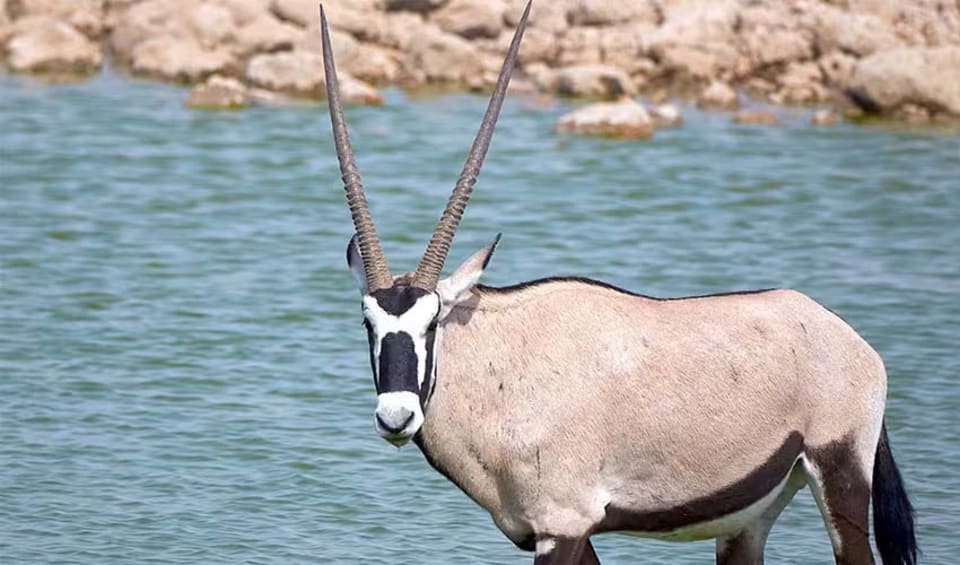Oryx – Oryxes
Large desert antelopes, including Arabian oryx that was saved from extinction
With its striking appearance and remarkable adaptability, the Oryx stands as a symbol of endurance and resilience in some of the harshest environments on Earth. They are distinguished by their pale fur, which provides an effective camouflage in their arid desert habitats, juxtaposed with stark dark markings on their faces and legs that lend a distinctive and dramatic appearance. One of the most iconic features of these antelopes is their long, almost straight horns, which can be used effectively in defense against predators and intraspecific competition among males.
Oryx species are primarily adapted to life in arid plains and deserts, showcasing an incredible ability to survive in extreme conditions with limited access to water. Remarkably, some species have also been observed thriving in varied terrains, including rocky hillsides and areas with dense thickets, indicating their versatile nature. Their capacity to go without water for extended periods is facilitated by their diet, which consists of moisture-rich grasses and shrubs and physiological adaptations that minimize water loss.
Living in social herds that can number up to 600 individuals offers numerous benefits, including enhanced vigilance against predators, greater success in locating food and water sources, and a complex social structure that facilitates breeding and the rearing of young. The social dynamics within an oryx herd are fascinating, with a hierarchy that helps maintain order and cohesion among the group members.
With an average lifespan of about 20 years in the wild, oryxes play a significant role in their ecosystems, both as consumers of vegetation, which helps in the control of plant growth, and as prey for large carnivores, thereby contributing to the ecological balance. Their feeding behavior, which includes grazing on a variety of grasses and browsing on shrubs, is crucial for their survival in environments where food sources are often sparse and scattered.
Species in this genus
East African oryx
They can raise their body temperatures to avoid loss of water from their body by sweating
Scimitar oryx
Named after the long, curved shape of its horns — which resemble a scimitar sword
Arabian oryx
A desert icon, stands tall, thriving in the sand – truly born to be wild in their extreme habitat
Gemsbok
Their large, bat-like ears help them dissipate heat, keeping them cool in the hot desert climate





